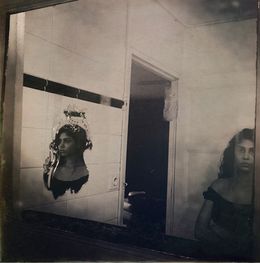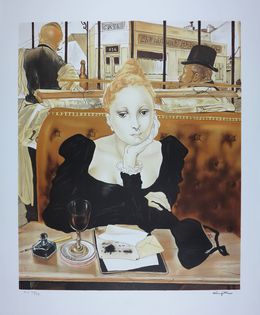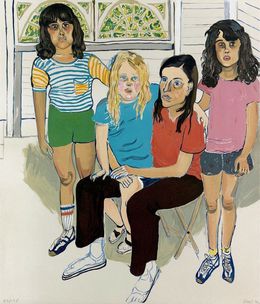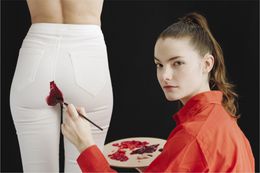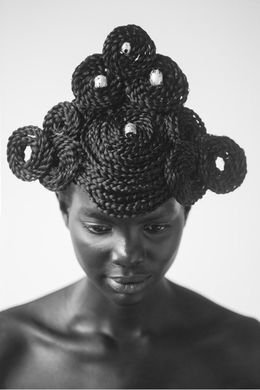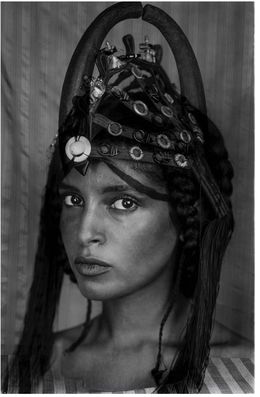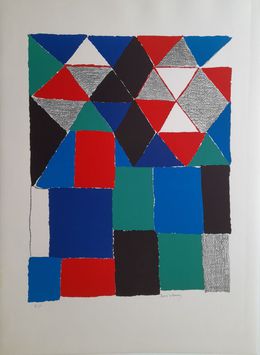
Meet Ludivine Gaillard
Cultural mediator, feminist art historian and author
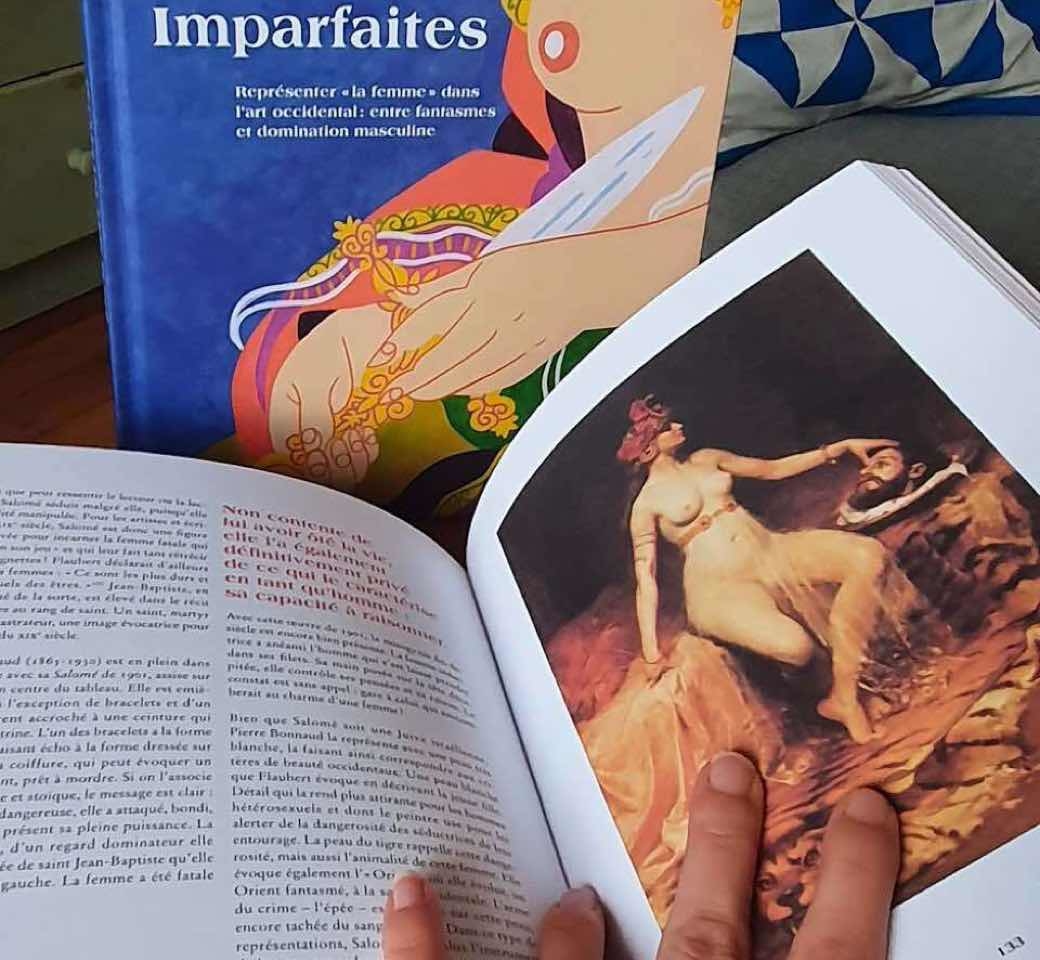
A glance at Ludivine's book, "Imparfaites" © Ludivine Gaillard
Ludivine Gaillard is the art historian challenging the male-oriented canon through her website and Instagram account “Mieux vaut art que jamais" (“Better art than never" in English). Adopting an accessible style, Ludivine's writing explores a feminist rendering of art history. Join Artsper as we chat to Ludivine all about “Mieux vaut art que jamais" and her new art history book "Imparfaites"!
1. Hello Ludivine! Can you tell us a bit about your project "Mieux vaut art que jamais"?
"Mieux vaut art que jamais" is a website and Instagram account where I join together my research on women's history and Western art history from a feminist perspective. I began with the simple observation that art is only a reflection of the time in which it was produced. Having been, until recently, mainly produced by men for men, it contains sexist and misogynistic biases specific to each era. This is what I bring to light through my analyses. Images are never neutral, which is why it is important to interrogate and (re)contextualize them.
2. At Artsper, our mission is to make art more accessible to everyone. We love to discover platforms like yours, which work in this direction. How did you develop the vocation to share and democratize art history?
The trigger was an internship at the Artips editorial office in 2015, where I learned how to make art accessible to as many people as possible through writing. Straight after, I opened my self-employed status in cultural mediation and created my website "Mieux vaut art que jamais," as well as its Instagram account. Instagram allows me to make knowledge easily accessible, in a playful and dynamic way, but also to exchange directly with the people who read my content.


From left to right: “Timoclea" at the Capodimonte Museum in Naples, a corner of Ludivine's apartment © Ludivine Gaillard
3. You deal with all artistic practices and eras. How do you decide which subjects to cover?
It depends. During my readings, I always have a notebook and a pen near me to write down ideas. Otherwise, I browse through books on Greco-Roman mythology to find the next myth to tackle. The artwork selection usually comes later – it is the fruit of long research on the internet when there aren't any that spontaneously come to mind. Also, I have a folder called "icono prochaines publications" (“icono future publications" in English) where I save reproductions of works found randomly during my wanderings on the internet; I consult it regularly for inspiration!
4. You approach your subjects with a feminist angle, which is more and more present in contemporary resources. In your opinion, is there still a long way to go in the way art history is taught?
During my studies (bachelor's and master's) in art history, 95% of the course content was on works by male artists. And not to mention these "feminine beauties," passive, idealized, objectified, and prevalent across art history, even in our contemporary visual culture! Or the scenes of violence (rapes, kidnappings, etc) perpetrated on female characters, and sublimated, but also occulted by the quality of the execution of the work. A form of trivialization of violence, committed on women and unfortunately still current.
I had the opportunity to discuss this with students, and most of them tell me that this has not changed. Research approaches that combine art history and gender studies are developing in France, notably at the INHA where seminars dealing with these themes are organized. But there is still work to be done so that institutions ( museums, universities) make this knowledge accessible, as research is cruelly lacking in budget.
5. You are successful on your blog as well as on your Instagram account. Do you think Instagram has become an essential tool for the way young audiences learn?
Yes! We've seen it with the lockdown, with museums being closed, people have felt the need to continue to educate themselves and social media has been a great medium for that. As a cultural mediator myself, my activity was at a standstill. So I was able to publish on average every two or three days and my number of subscribers quickly increased. I had a lot of enthusiastic feedback and that was the case for many other content creators! Now there is a real Instagram community around art and culture. Museums have realized this and are now calling on some of us to propose new types of mediation on social networks. We have established a bond of trust with our respective communities who are sensitive to our opinions and analyses. This allows museums to attract new audiences and promote their collections and temporary exhibitions in a more fun and accessible way.


From left to right: Ludivine's personal library, a view of the Garden of Maison Balzac: a place Ludivine loves © Ludivine Gaillard
6. Among the diversity of research behind your content, could you share with us a favorite story, anecdote, or even facet of art history that you have discovered?
This is the work of the Italian artist Elisabetta Sirani from the 17th century. While she produced paintings that fit into "history painting" - a notable fact for a woman, since this genre was traditionally reserved for male artists - she demonstrated a tremendous capacity for invention. She proposed new interpretations of historical and biblical subjects, where her female characters show strength, initiative, agentivity, contrary to what Western art has accustomed us to.
While writing my book Imparfaites - Représenter " la femme " dans l'art occidental : entre fantasmes et domination masculine (Imperfect Women - Representing “The Woman" in Western Art : Between Fantasies and Masculine Domination in English) which came out on the 3rd of November this year at First Editions, I did a lot of research for the chapter on sexualized children in art. I discovered a whole section of art history that is rather depressing... in particular the painter Balthus, who not only painted little girls and teenagers, naked, eroticized, but also had sexual relations with some of these teenagers.
7. Do you personally collect art? If so, which artists do you have your eye on at the moment?
I follow the work of contemporary illustrators closely. I have exhibited at home - among others - illustrations by Niall Grant and Maïté Granjouan. I will soon be buying works by Le Miroir Fou, an illustrator who is inspired by the style of medieval and Renaissance engravings and produces superb, very detailed, sometimes even funny and feminist compositions!
Their favorite artworks
